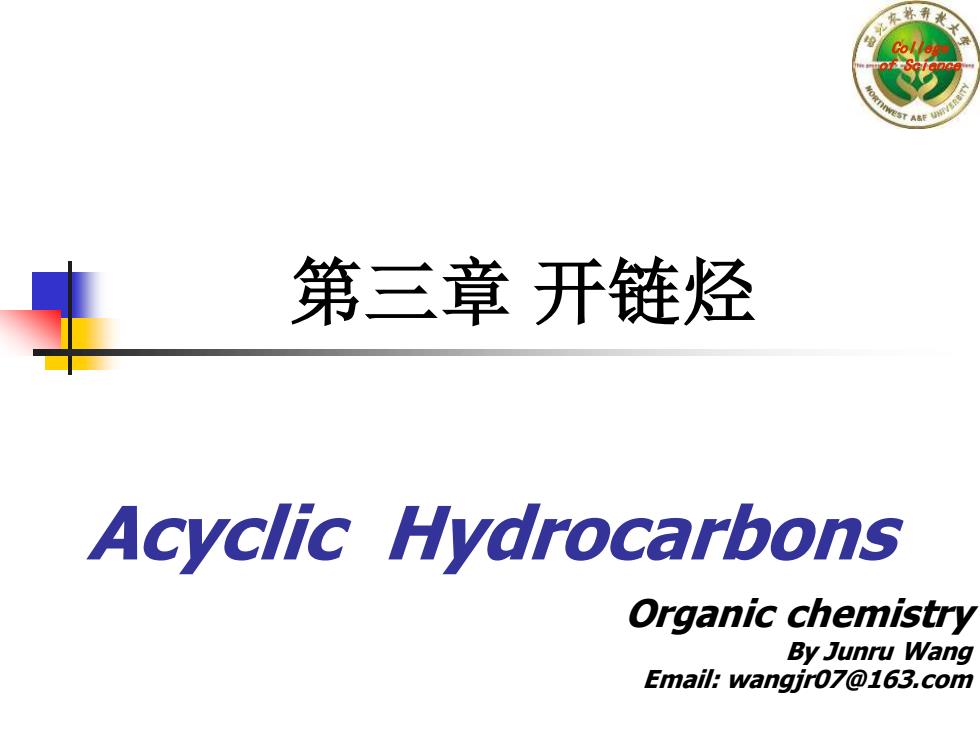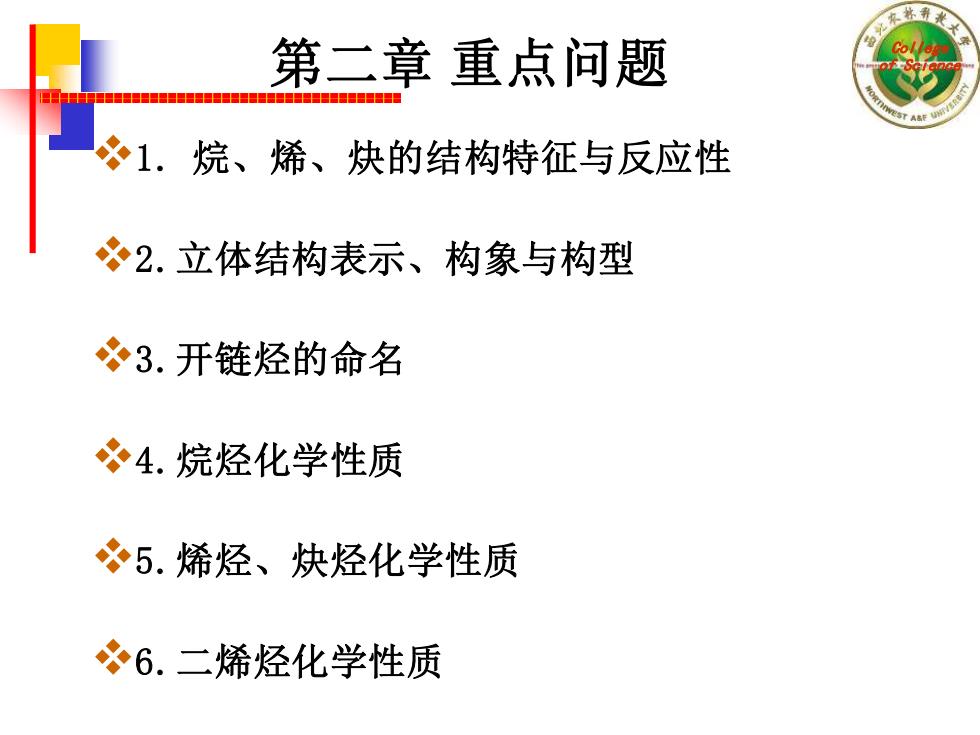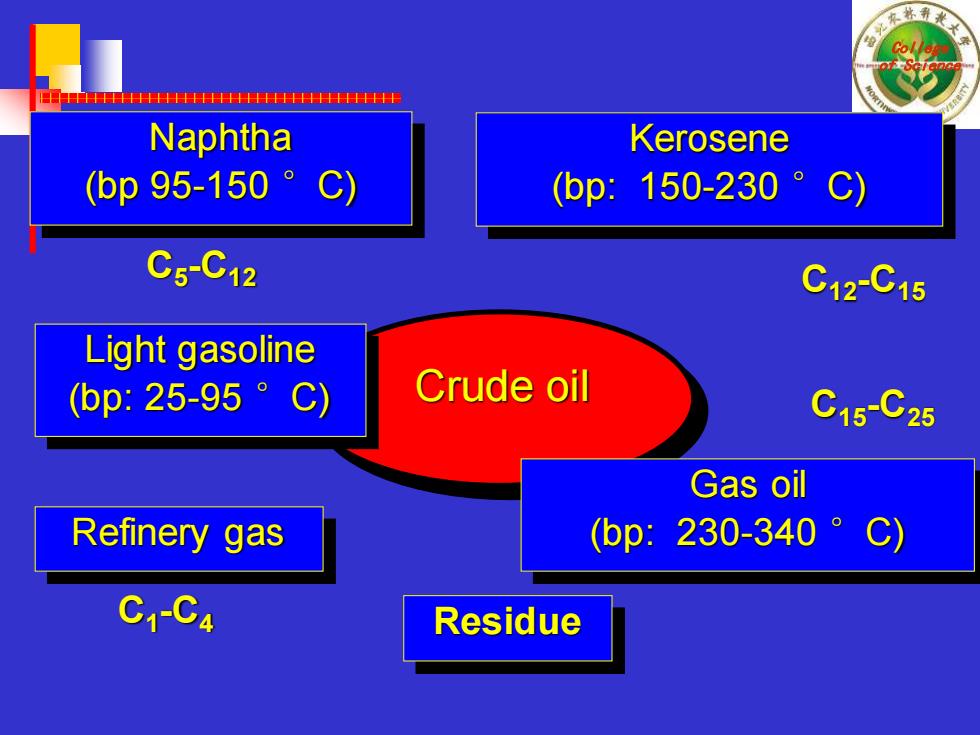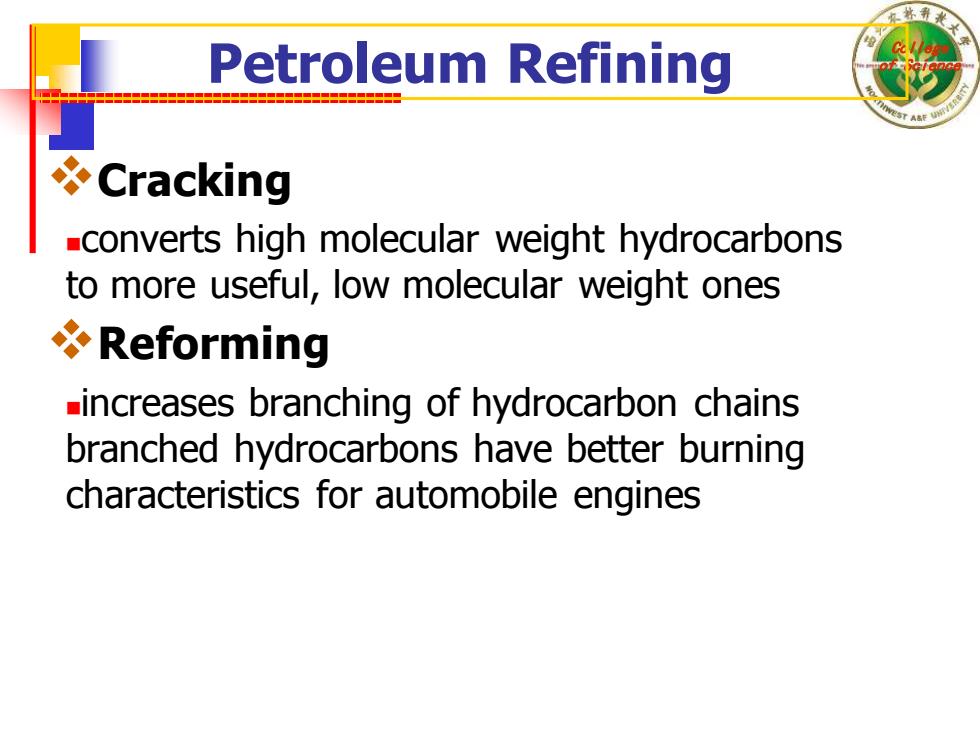
第三章开链烃 Acyclic Hydrocarbons Organic chemistry By Junru Wang Email:wangjr07@163.com
Organic chemistry By Junru Wang Email: wangjr07@163.com College of Science 第三章 开链烃 Acyclic Hydrocarbons

第二章重点问题 1.烷、烯、炔的结构特征与反应性 2.立体结构表示、构象与构型 3.开链烃的命名 4.烷烃化学性质 5.烯烃、炔烃化学性质 6.二烯烃化学性质
College 第二章 重点问题 of Science ❖1. 烷、烯、炔的结构特征与反应性 ❖2.立体结构表示、构象与构型 ❖3.开链烃的命名 ❖4.烷烃化学性质 ❖5.烯烃、炔烃化学性质 ❖6.二烯烃化学性质

TTHHHHHHHHHHHHHHHHHHHHHHHHF Naphtha Kerosene (bp95-150。C) (bp:150-230°C) C5-C12 C12C15 Light gasoline bp:25-95。C) Crude oil C15C25 Gas oil Refinery gas (bp:230-340。C) C1-C4 Residue
College of Science Crude oil Refinery gas C1 -C4 Light gasoline (bp: 25-95 °C) C5 -C12 Naphtha (bp 95-150 °C) Kerosene (bp: 150-230 °C) C12-C15 Gas oil (bp: 230-340 °C) C15-C25 Residue

Petroleum Refining Cracking -converts high molecular weight hydrocarbons to more useful,low molecular weight ones Reforming -increases branching of hydrocarbon chains branched hydrocarbons have better burning characteristics for automobile engines
College Petroleum Refining of Science ❖Cracking ◼converts high molecular weight hydrocarbons to more useful, low molecular weight ones ❖Reforming ◼increases branching of hydrocarbon chains branched hydrocarbons have better burning characteristics for automobile engines

第一节烷、烯、炔的 结构特征与反应性 A
College 第一节 烷、烯、炔的 of Science 结构特征与反应性